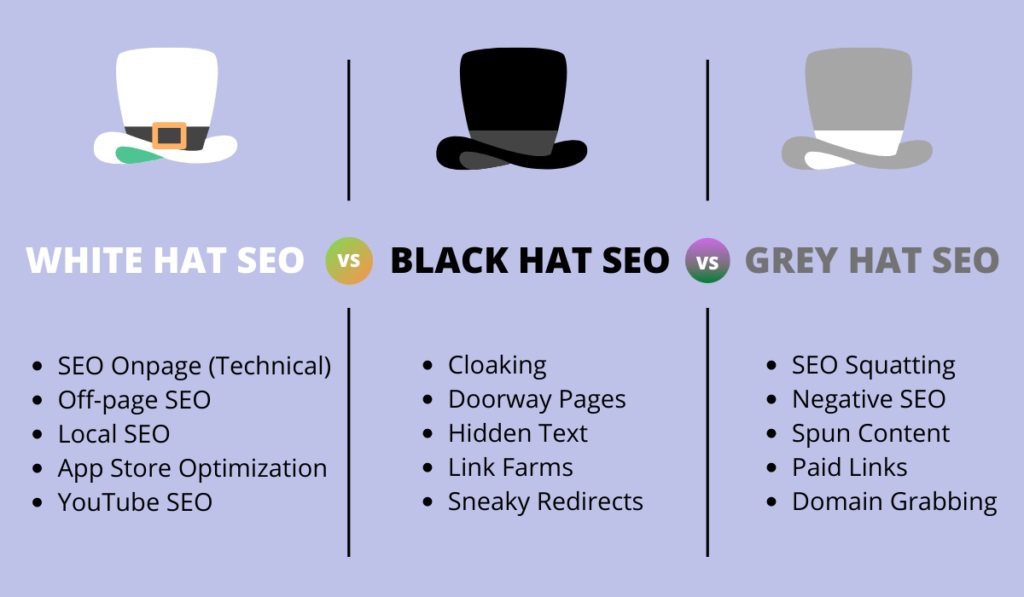
Understanding the Spectrum of SEO Practices
The world of Search Engine Optimization (SEO) can often seem like a minefield, especially for those just stepping onto the digital marketing battleground. With ever-changing algorithms and best practices, understanding and navigating SEO is vital to any website’s success. SEO strategies are generally classified into three categories: white hat, black hat, and grey hat SEO. While white hat practices strictly adhere to search engine guidelines, black hat techniques are designed to exploit them for quick wins, often at the cost of sustainability. The middle ground is occupied by grey hat SEO, an interesting and somewhat controversial space.
Grey hat SEO is not explicitly against search engine guidelines but still operates in a moral grey area, utilizing strategies that fall between white and black hat practices. The question arises: Is grey SEO worth it? Let’s dive in to comprehend this nuanced facet of SEO and analyze whether it’s a suitable strategy for your digital marketing arsenal.
The Allure of Grey Hat SEO
Grey hat SEO represents a tempting middle ground for many businesses. It provides an opportunity for faster growth than white hat strategies while being less risky than black hat techniques. It’s like being in a constant state of negotiation with search engine guidelines, seeking opportunities to gain an edge without falling foul of the rules.
One popular grey hat technique is clickbait. By crafting catchy, sensational headlines, businesses aim to draw clicks and drive traffic. Another technique is writing for search engines rather than audiences, often by keyword stuffing or creating doorway pages. While these methods may yield short-term benefits, they don’t inherently add value for users and can risk alienating them in the long run.
The Risks and Rewards
Utilizing grey hat SEO practices can certainly be tempting due to their potential for faster returns. However, these rewards come with their own set of risks. As search engines become increasingly intelligent and discerning, tactics that once walked the line between acceptable and unacceptable are increasingly being penalized. An algorithm update can swiftly turn a grey hat method into a black hat one, leading to potential penalties, demotion in rankings, or even removal from search engine results.
However, when used responsibly and in combination with white hat techniques, grey hat SEO can indeed provide a competitive edge. The key is to ensure these practices enhance user experience, rather than compromising it for the sake of SEO.

Ethical Considerations and Industry Perception
Ethical considerations also come into play with grey hat SEO. While not outright breaking the rules, these tactics can push the boundaries of what is acceptable. How a business chooses to conduct its SEO can impact its reputation within the industry and among its clientele. Using manipulative practices might achieve quick results, but they can also signal a lack of regard for integrity and authenticity.
In an increasingly connected world where transparency is valued, grey hat SEO can be a risky gambit. Careful consideration is needed to decide whether the potential gains outweigh the ethical and reputational risks involved.
The Final Verdict: Is Grey SEO Worth It?
The question of whether grey hat SEO is worth it does not have a simple yes or no answer. It largely depends on the business, its objectives, and risk tolerance. For some, the potential for quick gains might justify the risk, while others may prefer to stick strictly to white hat practices, ensuring long-term sustainability at the cost of slower growth.
One thing is clear, though: SEO is not a one-size-fits-all solution. A successful strategy often involves a mix of techniques tailored to the specific needs and goals of a business. The best approach is to stay informed about SEO trends and guidelines, be transparent with your audience, and above all, prioritize creating quality content that delivers genuine value. After all, at the heart of any effective SEO strategy is an engaging, user-focused experience.






